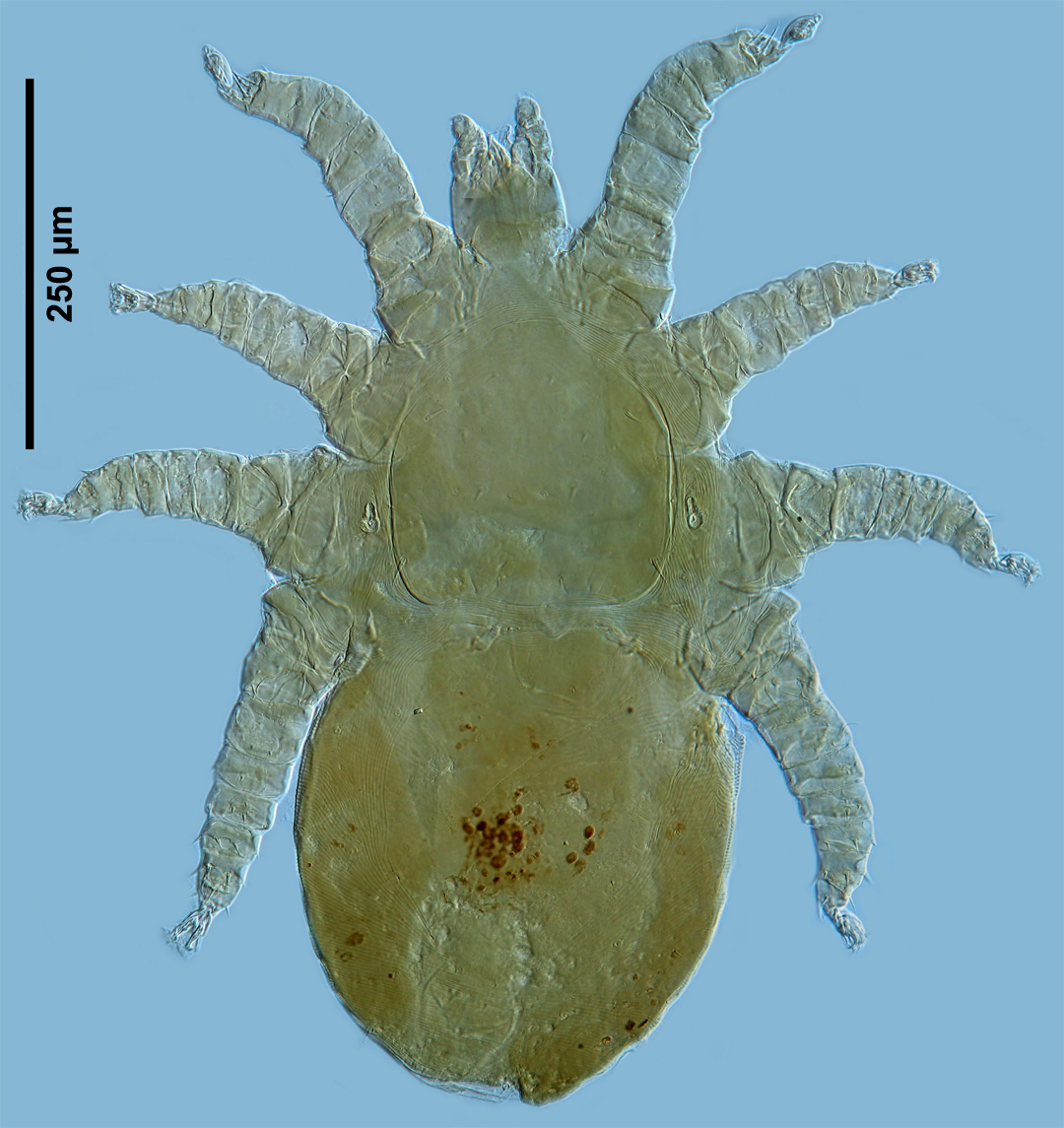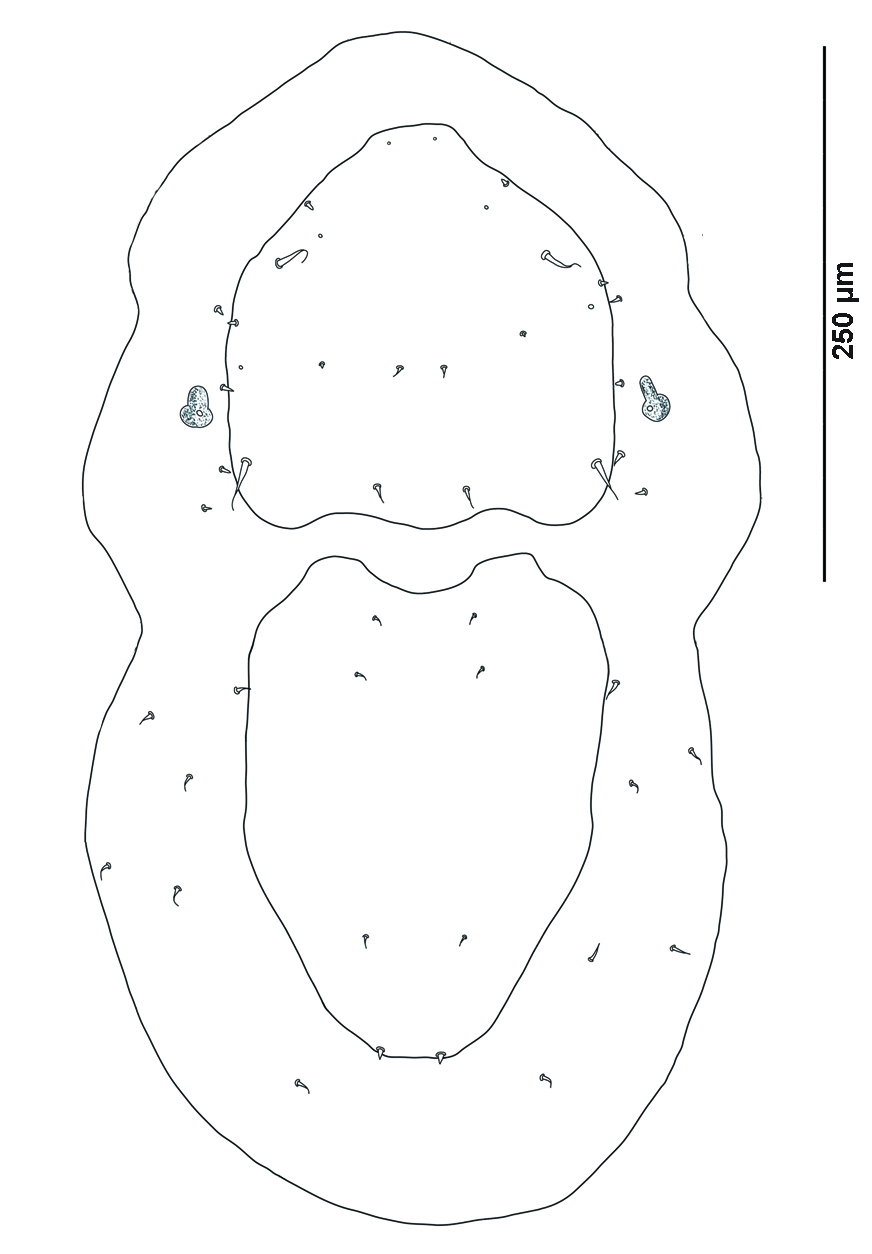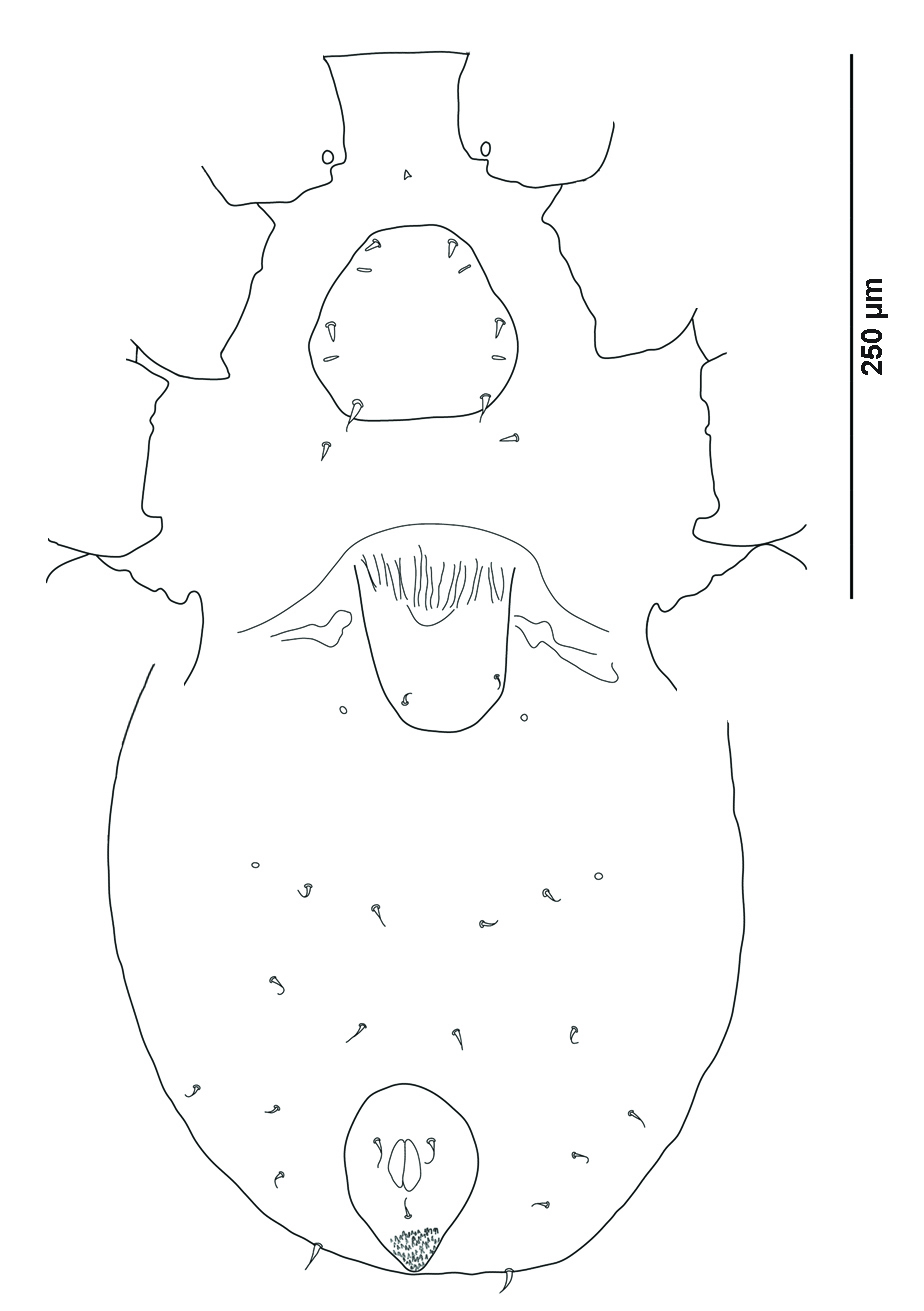
Ptilonyssus plesiotypicus Knee, 2008

Fig 95 (a). Ptilonyssus plesiotypicus female dorsal habitus.

Fig 95 (b). Ptilonyssus plesiotypicus female dorsum.

Fig 95 (c). Ptilonyssus plesiotypicus female venter.
North American host records:
Fringillidae:
Carpodacus purpureus,
Purple Finch
(Knee et al. 2008)
Diagnostic characteristics:
- two dorsal
shields, podosomal and fused opisthosomal and pygidial shields
- posterior margin of podosomal shield is slightly trilobed
- opisthosomal shield is longer than wide, but not twice as long as wide
- opisthosomal shield without lateral excavation
- posterior margin of opisthosomal shield is rounded
- anterior margin of opisthosomal shield is medially straight with anterolateral
projections
- st1 st2 and st3 on the sternal shield
- subapical ventral setal pair on tarsus IV are relatively long strong spikes
- seven or more pairs of ventral opisthosomal setae
- four pairs of mesolateral setae
- mesolateral setae all approximately equal in length, there are not two pairs
of setae that are twice as long as another setal pair
- subposterior
pair of dorsal podosomal setae are longer than
mesolateral setae
- ventral hypostomal setae large distally inflated bulbs
- anal setae constricted proximally (within 1/3 of length from base) forming a
long filamentous tip
- paranal setae level with anal opening, paranal and postanal setae are unequal in
length
References:
Knee, W. 2008.
Five new species of Rhinonyssidae (Mesostigmata) and one new species of
Dermanyssus
(Mesostigmata: Dermanyssidae) from
birds of Alberta and Manitoba, Canada. Journal of Parasitology,
94: 348-374.
Knee, W., Proctor, H., and Galloway, T. 2008. Survey of nasal mites (Rhinonyssidae,
Ereynetidae, and Turbinoptidae)
associated with birds in Alberta and
Manitoba, Canada. Canadian Entomologist, 140: 364-379.